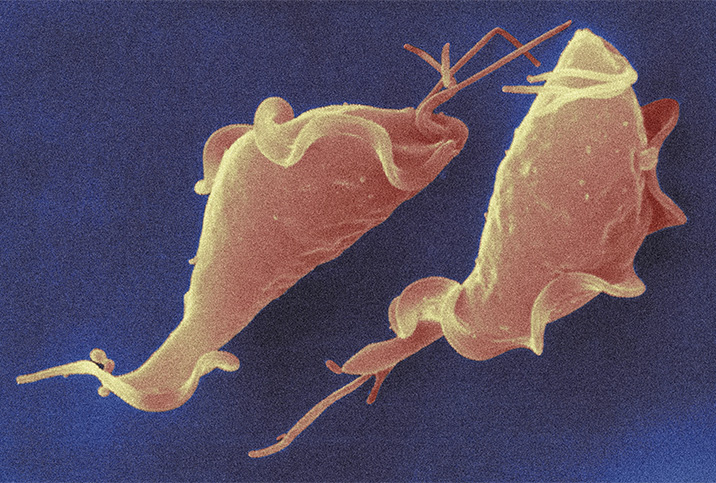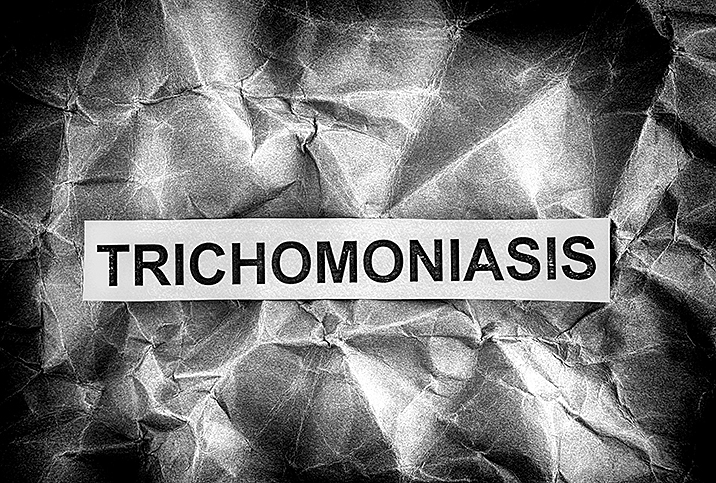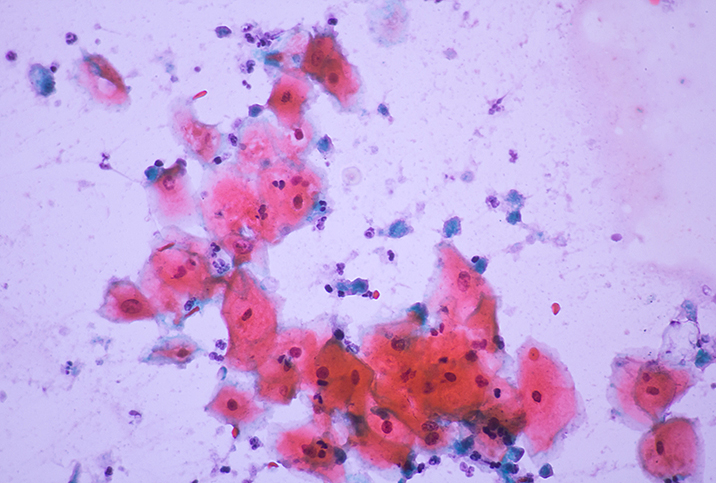Male Trichomoniasis: The Parasite That Affects the Penis

In 2018, about 2.6 million trichomoniasis infections were recorded in the United States, according to the Centers for Disease Control and Prevention (CDC). The most common nonviral sexually transmitted infection (STI) worldwide, trichomoniasis is passed only through sexual activity.
Trichomoniasis, or "trich," is caused by the parasite Trichomonas vaginalis (TV) and affects the genitourinary tract. This infection is more common in women, but don't overlook male trichomoniasis.
"It primarily infects the cells that line the genitourinary tract, often causing inflammation of the vagina, urethra [and] several glands of the genitourinary tract," said Rajiv Jayadevan, M.D., a urologist at UCLA Health in Santa Monica, California. "Less commonly, Trichomonas can infect the cervix, bladder and even the prostate in men. While women can contract the infection from both males and females, men generally only contract the infection from women and do not transmit it to male partners."
The use of barrier methods, such as male and female condoms, is the only way for sexually active people to prevent getting infected with the parasite or other STIs.
The infection is passed through vaginal sex but cannot be passed through anal or oral sex. It can also be spread by sharing sex toys without washing them or covering them with a new condom, according to the National Health Service (NHS) of the United Kingdom.
Penile soreness
While about 70 percent of people with trich are asymptomatic, the infection can cause itching and burning in the urethra, the long tube in the penis that carries urine and semen. Symptoms vary and normally appear within five to 28 days after infection.
"Symptoms can include urinary frequency, burning with urination, painful ejaculations, penile soreness and thin, white penile discharge," said Denise Asafu-Adjei, M.D., a urologist and the medical director of male reproductive medicine at Loyola University Chicago Stritch School of Medicine.
In some cases, the infection spontaneously resolves in two weeks, Jayadevan noted. For less lucky people, trich can linger for months.
How to diagnose trichomoniasis
Cases of trichomoniasis are diagnosed with a nucleic acid amplification test (NAAT), Jayadevan said. The test inspects the presence of genetic material from the parasite through either a urine or urethral discharge sample.
However, STIs can be difficult to spot; many times, an infection is diagnosed when an asymptomatic partner is asked to attend a clinic for screening, according to Deborah Lee, M.B.Ch.B., a sexual and reproductive health specialist at Dr Fox Pharmacy, an online pharmacy headquartered in Bristol, England.
Regular checks for both yourself and your partner are important because STIs tend to travel in groups of two or three.
"If you have one, you are more at risk of having another," Lee said. "Once TV has been diagnosed in either a male or a female, a full STI screen is required for any sexual contacts in the past four weeks, testing for gonorrhea, chlamydia and HIV, and sometimes other infections such as hepatitis B and C. Moreover, research suggests that TV may act as a vector for spreading HIV, which can literally attach itself to the TV organisms and 'hitch a lift' into the upper genital tract."
Treating trichomoniasis
Trich is treated with any of the following antibiotics: metronidazole (Flagyl), tinidazole (Tindamax) or secnidazole (Solosec). A physician prescribes either a single megadose or two lower doses daily over the course of seven days, according to Mayo Clinic.
However, Jayadevan highlighted that the preferred treatment for males is a single dose of metronidazole because it's extremely effective against the parasite. A CDC report on randomized clinical trials showed that metronidazole had an 84 percent to 98 percent cure rate, while tinidazole—a more expensive antibiotic—had a cure rate of 92 percent to 100 percent.
Patients shouldn't engage in sexual activity for at least seven days following antibiotic treatment. Most importantly, their partner should be treated simultaneously because a person can be reinfected after treatment if their partner still has the infection.
Lee warned that alcohol is forbidden while taking metronidazole because it can cause nausea and vomiting, which might cause the treatment to fail. If that happens, the course of metronidazole should be repeated and the patient should pay more attention to detail. In cases of persistent treatment failure, the antibiotic dosage is increased.
Additional tips for men
Male trichomoniasis can cause additional problems for men who have symptoms after they catch the infection.
"Males who are symptomatic often have urethritis, which is inflammation of the lining of the urethra," Jayadevan explained. "Unfortunately, if severe enough, urethritis can lead to strictures, [i.e., a narrowing] within the urethra. Patients with urethral stricture often have urinary symptoms such as a weak stream or having to strain to urinate, and this sometimes requires surgical intervention to treat."
The use of barrier methods, such as male and female condoms, is the only way for sexually active people to prevent getting infected with the parasite or other STIs. You should always check the expiration date on every condom before use and apply it with clean hands before any genital-to-genital contact, Lee stressed. Use water-based lubricants instead of oil-based ones, because the latter can weaken latex and cause condom breakage.


















